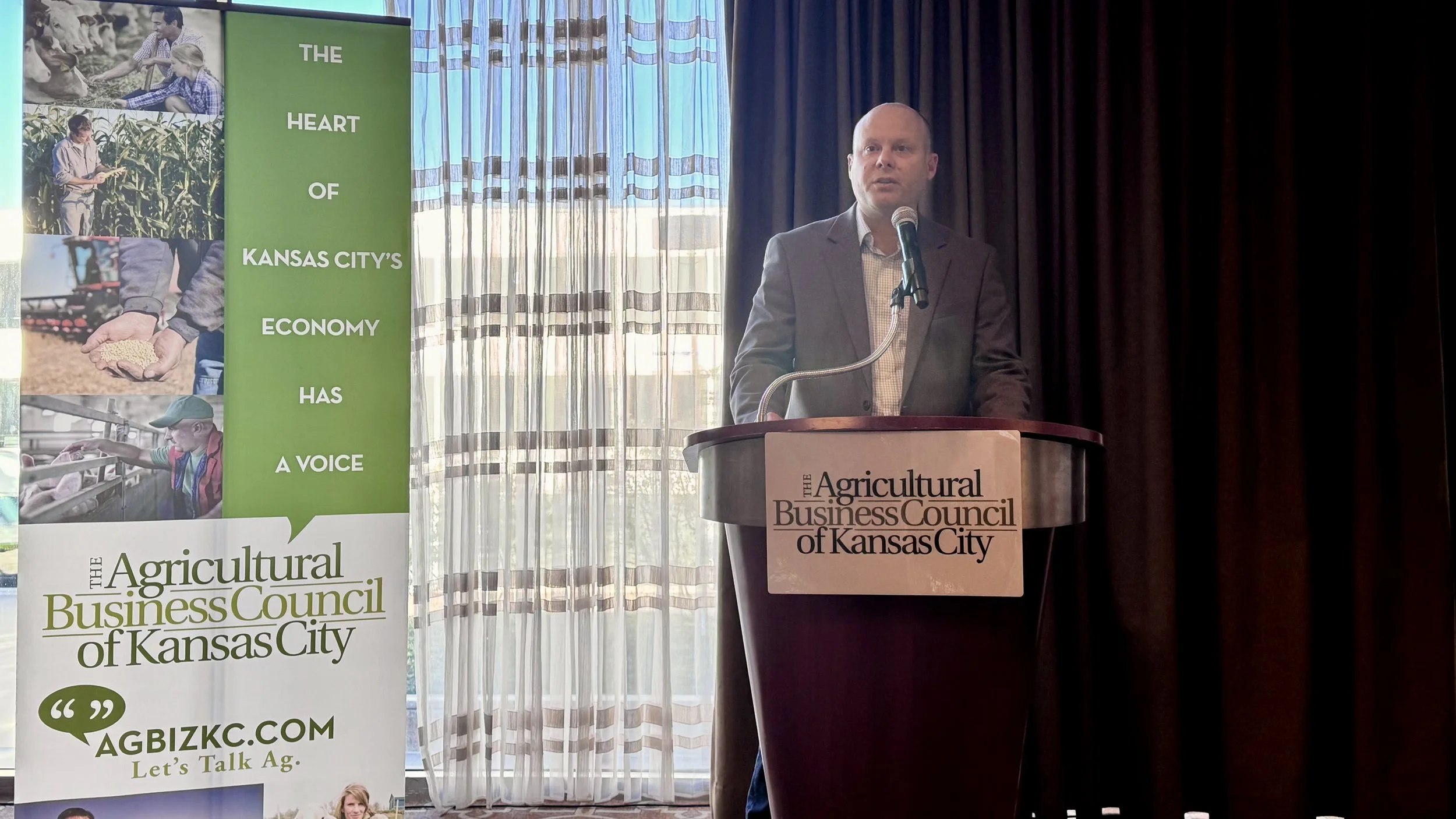At AFA Breakfast, Chevron Biofuels Leader Provides Industry Outlook
/At a breakfast hosted by the Agricultural Business Council of Kansas City during the AFA Leaders Conference, Paul Nees, Global Book Lead for Renewables and Carbon at Chevron, offered a sober but forward-looking assessment of the biofuels landscape. Speaking to an audience of producers, agribusiness executives and students, Nees framed the renewable fuels industry as one navigating “different cycles”—a sector caught between ambitious decarbonization goals and a tightening policy environment. The forces shaping the market, he said, now extend beyond federal mandates, driven increasingly by private-sector emissions commitments, volatile agricultural commodity prices, and global energy market shifts.
Yet those forces are colliding with what Nees described as unusually strong headwinds. The 2026 and 2027 Renewable Volume Obligations (RVOs) remain under review, and though the proposed numbers are promising, they are not final. Compounding the uncertainty is the unresolved status of small refinery exemption policy—long a flash point within the industry—leaving stakeholders unsure how much obligated demand will ultimately materialize.
Nees illustrated how the industry’s own successes have contributed to the turbulence. High margins in recent years triggered a wave of production capacity expansions and plant construction, intensifying competition for feedstocks and compressing profitability. New federal tax incentives—including the blender’s tax credit (BTC) and Section 45Z for sustainable aviation fuel—were once expected to stabilize the market, but recent changes to the programs under the One Big Beautiful Bill (OBBB) have altered the calculus. Domestic-feedstock requirements and other technical adjustments have shifted the relative value of different fuels and, in some cases, stranded investments premised on earlier interpretations.
A critical variable for the sector’s long-term health is feedstock growth. Expanded cultivation of winter canola, camelina, and CoverCress offers meaningful promise, he said, but the industry faces practical challenges: each oilseed requires a different crush process, complicating the scaling of supply to match rising production capacity.
Still, Nees argued that the core trajectory of the industry remains intact. Global demand for low-carbon fuels continues to grow, and U.S. policy, despite its complexities, is still among the world’s most supportive. The challenge for producers and refiners, he concluded, will be managing through this transitional period—aligning investment with regulatory direction, expanding feedstock supply, and preparing for the next cycle in a market where certainty remains in short supply.


